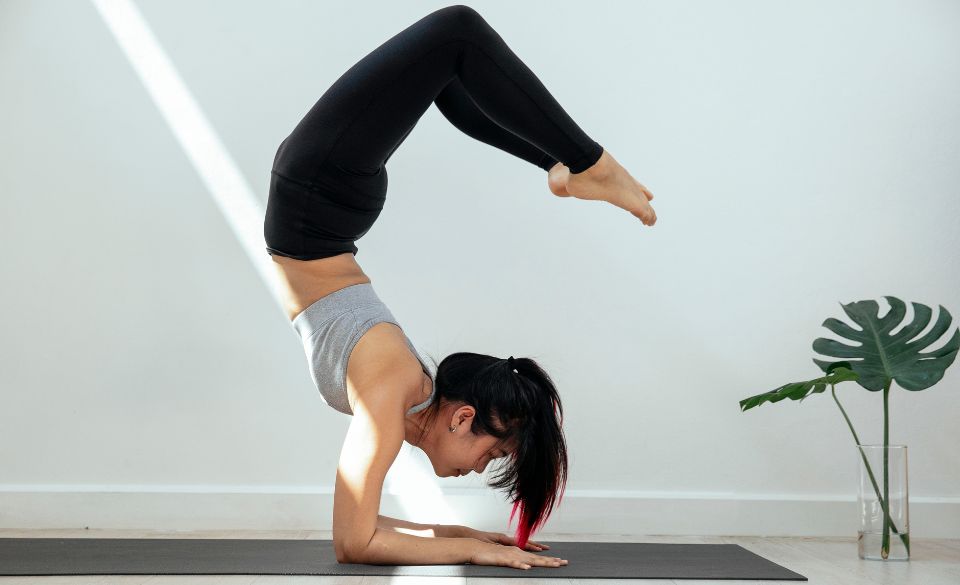
How to Become More Flexible and Why It’s Important
Page Contents
Flexibility plays a crucial role in our overall health and well-being, yet it’s often overlooked in our fitness routines. Being flexible not only allows us to move freely and perform daily activities with ease but also helps prevent injuries and improves athletic performance. If you’re looking to enhance your flexibility and reap the benefits, you’re in the right place. In this article, we’ll explore how to become more flexible and why it’s important for your overall physical fitness.
Why is Flexibility Important?
Before we dive into the strategies for improving flexibility, let’s understand why it’s essential. Flexibility refers to the range of motion of your joints and muscles. Having good flexibility enhances your physical performance, whether you’re an athlete or simply engaged in regular exercise. It improves your posture, balance, and coordination, reducing the risk of falls and injuries. Increased flexibility also alleviates muscle tension and improves blood circulation, leading to better relaxation and recovery. It allows for more efficient movement patterns and prevents muscular imbalances that can result in pain or dysfunction.
Strategies to Improve Flexibility
1. Stretching: Incorporate regular stretching exercises into your routine. Focus on both dynamic stretches (moving stretches that mimic your activity) and static stretches (holding stretches to elongate muscles). Aim to stretch major muscle groups, such as hamstrings, quadriceps, calves, hips, shoulders, and back. Remember to warm up before static stretching and breathe deeply while holding each stretch for 20-30 seconds.
2. Yoga or Pilates: Consider practicing yoga or Pilates, as they are excellent disciplines for improving flexibility. These activities combine stretching, strength, and stability exercises, promoting overall body flexibility and mobility. Yoga poses and Pilates exercises target specific muscle groups, gradually increasing their range of motion and flexibility.
3. Foam Rolling: Utilize a foam roller to release muscle tension and enhance flexibility. Foam rolling, also known as self-myofascial release, helps break up adhesions in the fascia (connective tissue) and improves muscle elasticity. Roll over various muscle groups, focusing on areas that feel tight or restricted. Perform gentle rolling motions and spend extra time on trigger points to release tension.
4. Active Range-of-Motion Exercises: Engage in exercises that promote active range of motion, such as leg swings, arm circles, and hip rotations. These movements dynamically stretch and strengthen the muscles, improving flexibility and mobility. Incorporate these exercises as part of your warm-up routine or during breaks throughout the day.
Benefits of Improved Flexibility
1. Injury Prevention: Enhanced flexibility reduces the risk of injuries by allowing joints and muscles to move through their full range of motion. It improves muscle elasticity and prevents strains, sprains, and other soft tissue injuries.
2. Improved Athletic Performance: Flexibility contributes to better athletic performance in various sports and physical activities. It allows for more extensive and efficient movements, enhances agility and coordination, and improves overall physical capabilities.
3. Better Posture and Alignment: Good flexibility promotes better posture by lengthening tight muscles and correcting imbalances. It helps align the body’s structure properly, reducing the strain on joints and supporting optimal biomechanics.
4. Reduced Muscle Tension and Stress: Flexibility exercises help release muscle tension, reducing stiffness and promoting relaxation. Improved flexibility also enhances blood circulation, delivering more oxygen and nutrients to muscles and aiding in stress reduction.
Additional Tips for Flexibility
In addition to the strategies mentioned above, here are a few more tips to help you on your journey to increased flexibility:
1. Consistency is Key: Make flexibility training a regular part of your routine. Aim for at least three to four sessions per week to see noticeable improvements over time. Remember that flexibility gains are cumulative, so stay committed and make it a habit.
2. Listen to Your Body: Pay attention to your body’s signals during flexibility exercises. Mild discomfort is normal, but avoid pushing through sharp pain or extreme discomfort. Stretch to a point where you feel tension but not pain. Respect your body’s limits and progress at your own pace.
3. Warm Up Properly: Before diving into intense stretching, warm up your muscles with light aerobic exercises or dynamic movements. This increases blood flow, warms up the tissues, and prepares your body for deeper stretches.
4. Stay Hydrated: Hydration is important for overall health and flexibility. Drink enough water throughout the day to keep your muscles and connective tissues supple and hydrated.
Scientific Evidence on Flexibility Benefits
Multiple studies have highlighted the positive impact of flexibility training on overall health and performance. For instance, a study published in the Journal of Sports Sciences found that individuals who incorporated regular stretching exercises into their routine experienced significant improvements in joint range of motion and muscle flexibility.
Another study conducted at the University of Milan revealed that flexibility training reduced muscle soreness and enhanced muscle recovery after intense exercise. This suggests that maintaining flexibility can aid in post-workout recovery and reduce the risk of delayed onset muscle soreness (DOMS).
Moreover, a review published in the Journal of Physical Therapy Science concluded that flexibility training plays a vital role in injury prevention. It highlighted how improved flexibility reduces the strain on muscles and tendons, decreasing the risk of musculoskeletal injuries during physical activities.
These studies, among others, provide scientific evidence supporting the importance of flexibility and its positive impact on various aspects of physical fitness and well-being.
Embrace the Journey to Flexibility
Flexibility is not only about touching your toes or performing impressive contortions. It’s about cultivating a body that is capable, resilient, and free from limitations. Embrace the journey to flexibility as an opportunity to connect with your body, explore its potential, and achieve a greater sense of physical freedom.
Remember that flexibility is a lifelong pursuit. It’s not about achieving a specific end point, but rather about continually working on and maintaining your flexibility throughout your life. Celebrate each milestone and enjoy the progress you make along the way.
So, let go of any preconceived notions about flexibility being only for gymnasts or dancers. It is for everyone. Start incorporating flexibility exercises into your fitness routine, be patient with yourself, and embrace the process. Your body will thank you with increased mobility, improved performance, and a greater sense of well-being. Get ready to feel more flexible, agile, and confident in your body’s abilities.
Final Words
Flexibility is a fundamental component of physical fitness, offering numerous benefits for your overall well-being. By incorporating strategies such as stretching, yoga or Pilates, foam rolling, and active range-of-motion exercises, you can improve your flexibility and enjoy the advantages it brings.
Whether you’re an athlete aiming to improve performance or simply looking to move more freely in your daily life, flexibility is key. It allows you to maintain proper posture, prevent injuries, and experience greater comfort in your movements. So, don’t neglect this essential aspect of fitness. Take the time to incorporate flexibility exercises into your routine and reap the rewards.
Remember, flexibility is not something that can be achieved overnight. It requires consistency and patience. Start by setting aside a few minutes each day to focus on stretching and mobility exercises. Gradually increase the intensity and duration of your flexibility training as your body becomes more accustomed to the movements.
It’s important to listen to your body and avoid overstretching or forcing yourself into uncomfortable positions. Respect your current limitations and work within your own range of motion. With time and practice, you’ll notice improvements in your flexibility, allowing you to move with greater ease and grace.
In conclusion, becoming more flexible is a journey worth embarking on. The benefits are vast, ranging from improved athletic performance to enhanced posture and injury prevention. By incorporating stretching, yoga or Pilates, foam rolling, and active range-of-motion exercises into your fitness routine, you can unlock your body’s full potential and enjoy the freedom of movement. So, let’s prioritize flexibility, embrace the process, and reap the rewards of a supple and agile body. Your future self will thank you for it!



